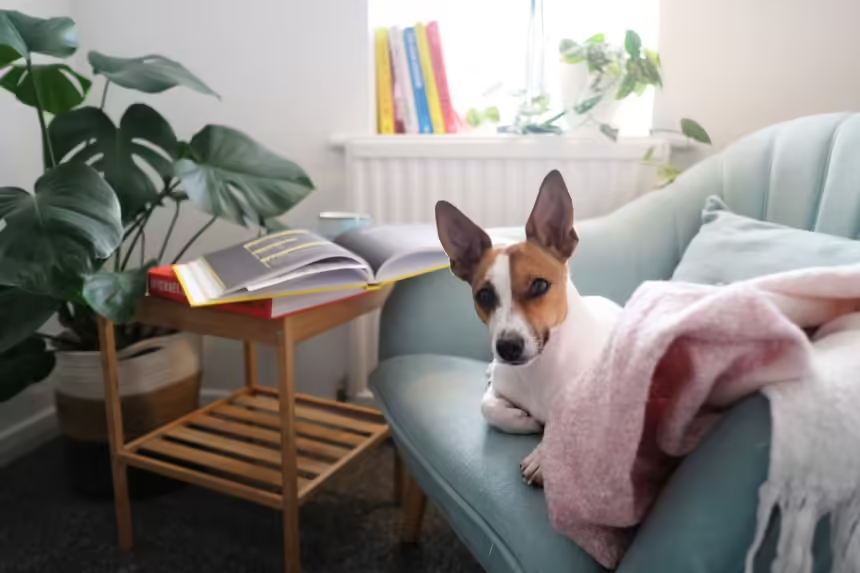Pet parenting is trending in the US, specifically after the pandemic when these furry companions gave solace during extended isolation. As of now, nearly 66% of households in the country have a pet in their families. It means extra responsibility, from feeding to training, grooming, and regular vet visits. Additionally, raising a pet is also about space requirements for your dog or cat to exercise and relax.
However, with the average size of American homes shrinking, space constraints can be a challenge for pet parents. Things are even more problematic for apartment dwellers because they have smaller spaces and common areas shared with neighbors. If you live in an apartment, you also need to follow some rules regarding the surroundings.
Fortunately, you can get the best of both worlds and create a comfortable and safe environment for your furry friend despite the limitations with some creativity and planning. In this article, we will share a few actionable tips to address the small-space challenge of apartment living with a pet.
Choose the Right Pet
Size is not the only consideration when it comes to choosing a perfect pet that fits well in a small apartment. You must also consider factors such as energy level and temperament. For example, small dog breeds are ideal for these spaces. According to the American Kennel Club, apartment dwellers have several options. Pugs, French bulldogs, bulldogs, and Shih Tzu are popular choices.
Some small breeds have high energy, which means they may need more space. Conversely, even large ones are happy to lounge on the sofa in a small space. Besides considering the size and energy level of the pet, ensure they are friendly with your neighbors. The last thing you want is neighbors complaining about a dog that barks incessantly when meeting people on the stairs or in the elevator.
If raising a dog seems taxing, you can opt for smaller pets like cats, rabbits, or guinea pigs. These cute companions thrive in smaller spaces.
Organize Your Space
According to statistics, the average size of apartments in large American cities like New York was 991 square feet as of 2022. In many cities, these may be much smaller, with an average size of 691 square feet. Find ways to maximize the available area with good organization. Designate a specific zone for your pet’s essentials, such as food and water bowls, bedding, and toys. It prevents clutter and ensures a familiar space for your pet.
Utilize vertical space to make up for the lack of square footage. You can install wall-mounted shelves for a cat to climb and explore. These fixtures will keep your feline baby entertained and active. Also, choose multifunctional furniture pieces you can use for storing pet supplies. The idea is to create more space without compromising the comfort and safety of your cat or dog.
Maintain a Clean Environment
Odors and lack of hygiene can quickly become an issue for a pet parent. It can be a bigger problem for apartment dwellers because they live in shared spaces. A neighbor may raise a red flag if they feel that your pet is a culprit for a foul smell in the common area. Establish a regular cleaning routine to ensure your apartment is fresh and free of pet hair. Investing in a high-quality vacuum cleaner is a good idea.
Use odor-neutralizing products to keep your home smelling good. Look for professional waste removal services to minimize the hassle of cleaning. When it comes to pet waste removal prices, they seem small for the convenience and hygiene these services offer. You can call them several times a week to pick up the waste from the property for easy disposal.
Scoop Soldiers suggests opting for customized services to address the unique needs of your pet and your living arrangement. By ensuring proper waste disposal, you can focus on looking after the other needs of your furry friend.
Establish a Routine for Exercise
All pets need regular exercise to stay fit and healthy. Without enough activity, your dog or cat could become overweight and experience mobility issues down the road. Living in a small apartment means your pet may miss out on indoor activity. A regular outdoor exercise routine is essential to ensure adequate exercise.
Take your dog for walks and engage it in indoor activities such as teaching new tricks and playing fetch. You can invest in interactive toys or DIY obstacle courses to provide exercise and mental stimulation to your furry buddy. Adequate stimulation prevents boredom and aggressive behaviors when pets have limited space to roam.
In conclusion, you may have some qualms regarding adopting a pet as an apartment dweller. Although bringing one home may not seem like a good decision due to space constraints, a little planning makes it feasible. Follow these simple steps to create a safe and comfortable space for your furry companion without sacrificing your comfort. They also ensure that you don’t get the attention of your neighbors for the wrong reasons.






